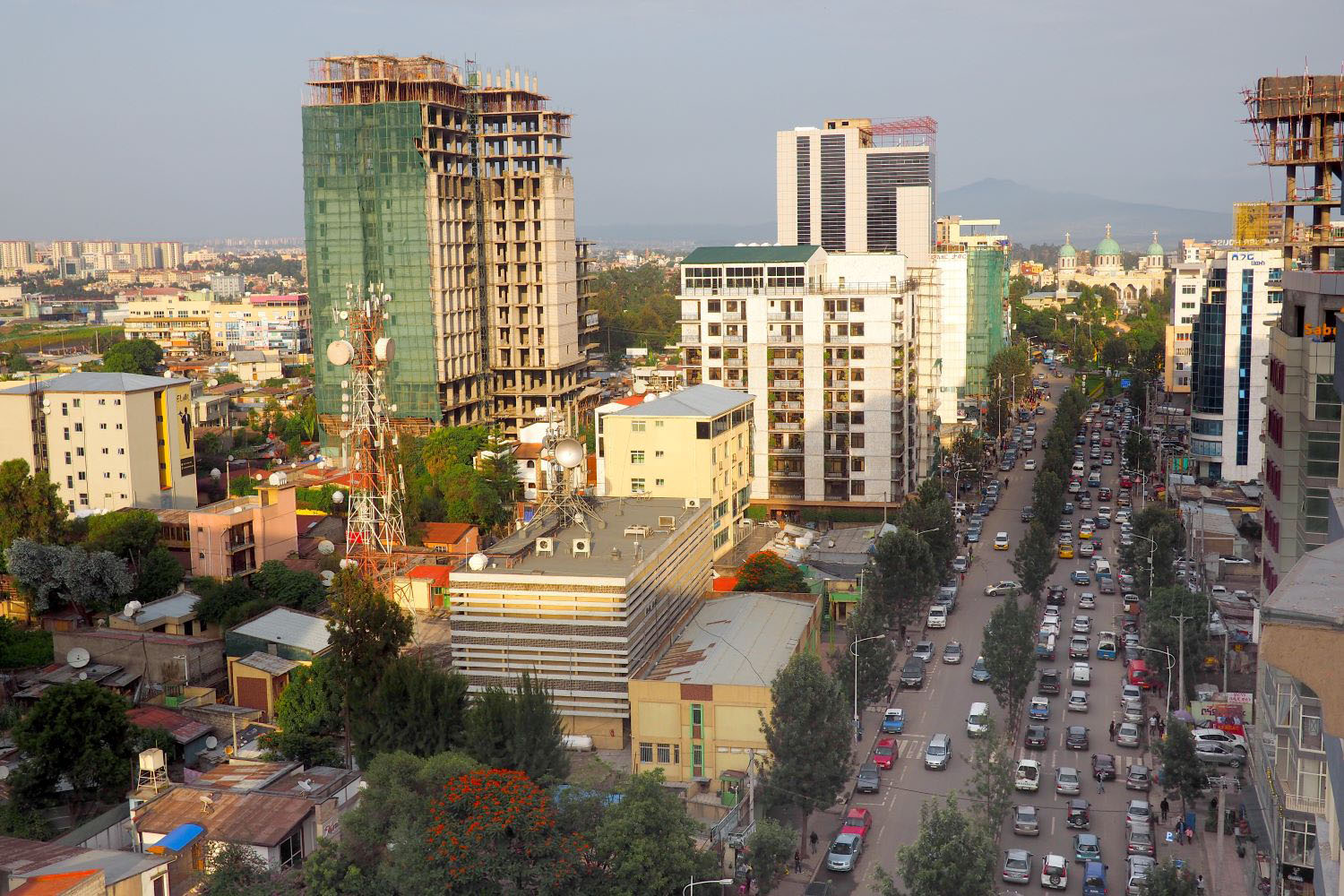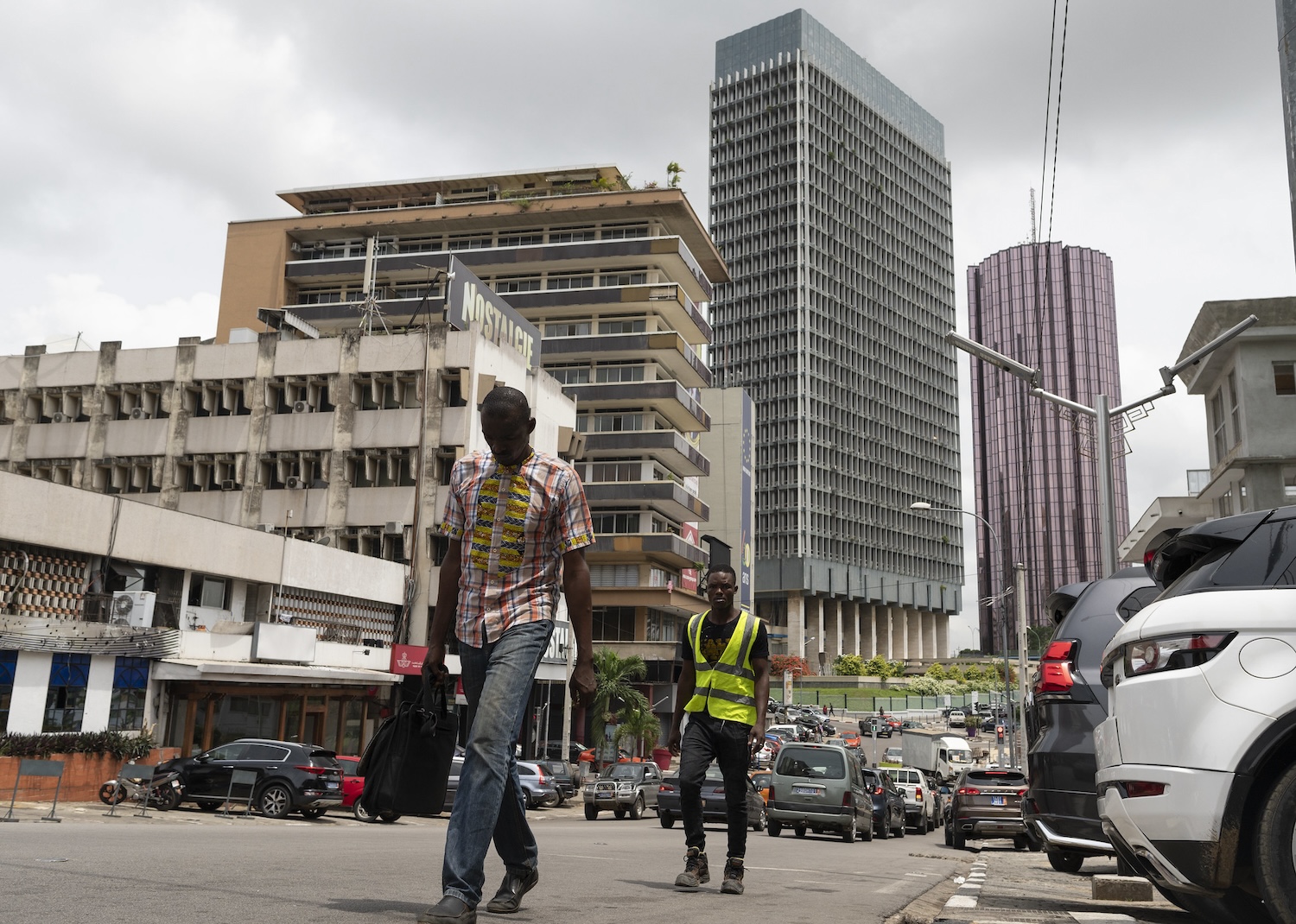January 25, 2010
More Fresh Ideas for Haiti
- Michael Clemens on Migration
- Ruth Levine on Protecting Girls
- Kimberly Elliott on Trade
- Vijaya Ramachandran on Food Aid
- Nancy Birdsall on U.S. Leadership
See also
 Source: 2000--07 figures from World Bank, Global Development Finance. 2008--09 figures from IMF staff.In the first half of this decade, creditors lent little to Haiti, probably because of suspect elections in 2000, so the country’s debt remained stable, especially after accounting for inflation.A more legitimate election in 2006 renewed hope. The IDB especially began lending. At the same time, Haiti entered the Heavily Indebted Poor Countries (HIPC) Initiative, the primary venue for debt cancellation among the traditional donors and international agencies. Haiti reached the HIPC Decision Point in November 2006, resulting in an immediate reduction in its debt service payments, then Completion Point last June, which triggered a cascade of formal debt write-offs totaling $757 million. Essentially all outstanding loans that Paris Club members, the IMF, the World Bank, and the IDB had made before 2005 have been or are about to be written off. ($63 million of the promised cancellation remains to be legally executed. This lag and new borrowing in 2009 largely explain why the debt total in the graph falls less than $757 million between 2008 and 2009.)Yet Haiti has a lot of debt for a country whose slate was seemingly wiped clean. It has borrowed heavily since the beginning of 2005. The IMF lent 105 million Special Drawing Rights (SDRs), worth $166 million now. The IDB disbursed some $400 million for projects in agriculture, infrastructure, and other areas. And new creditors entered the picture: Haiti now owes Taiwan $90 million and Venezuela a substantial $295 million. Taiwan's loans appear to have made by private banks with reassurance from their government that it would pay if Haiti doesn't, so the loans are considered sovereign credits. As for Venezuela, in 2005, it began selling oil on cheap credit to poor countries in the Americas through Petrocaribe.Not obvious from the graph is that nearly all Haiti’s loans are payable over decades and incur little interest. Petrocaribe, for example, makes 25-year loans at 1% per annum. The IMF’s loans are due sooner, but are still nearly free. In fact, the World Bank and IMF estimated in September that Haiti’s service on then-existing debts would amount to $18 million in fiscal year 2009--10, $20.3 million in 2010--11, and $33.8 million in 2011--12. Erasing these debt payments would meet only a a tiny fraction of Haiti's need---two-thirds of Port-au-Prince may lie in rubble---and constitute droplets of the other financial flows coursing into Haiti. In 2009, Haitians living abroad sent some $4.9 million back to their families every day ($1.8 billion/year). So debt relief would be equivalent to about a week of remittances. Exports in 2007 earned $674 million (including sales to visiting cruise passengers). Foreign aid in 2008 totaled $912 million:
Source: 2000--07 figures from World Bank, Global Development Finance. 2008--09 figures from IMF staff.In the first half of this decade, creditors lent little to Haiti, probably because of suspect elections in 2000, so the country’s debt remained stable, especially after accounting for inflation.A more legitimate election in 2006 renewed hope. The IDB especially began lending. At the same time, Haiti entered the Heavily Indebted Poor Countries (HIPC) Initiative, the primary venue for debt cancellation among the traditional donors and international agencies. Haiti reached the HIPC Decision Point in November 2006, resulting in an immediate reduction in its debt service payments, then Completion Point last June, which triggered a cascade of formal debt write-offs totaling $757 million. Essentially all outstanding loans that Paris Club members, the IMF, the World Bank, and the IDB had made before 2005 have been or are about to be written off. ($63 million of the promised cancellation remains to be legally executed. This lag and new borrowing in 2009 largely explain why the debt total in the graph falls less than $757 million between 2008 and 2009.)Yet Haiti has a lot of debt for a country whose slate was seemingly wiped clean. It has borrowed heavily since the beginning of 2005. The IMF lent 105 million Special Drawing Rights (SDRs), worth $166 million now. The IDB disbursed some $400 million for projects in agriculture, infrastructure, and other areas. And new creditors entered the picture: Haiti now owes Taiwan $90 million and Venezuela a substantial $295 million. Taiwan's loans appear to have made by private banks with reassurance from their government that it would pay if Haiti doesn't, so the loans are considered sovereign credits. As for Venezuela, in 2005, it began selling oil on cheap credit to poor countries in the Americas through Petrocaribe.Not obvious from the graph is that nearly all Haiti’s loans are payable over decades and incur little interest. Petrocaribe, for example, makes 25-year loans at 1% per annum. The IMF’s loans are due sooner, but are still nearly free. In fact, the World Bank and IMF estimated in September that Haiti’s service on then-existing debts would amount to $18 million in fiscal year 2009--10, $20.3 million in 2010--11, and $33.8 million in 2011--12. Erasing these debt payments would meet only a a tiny fraction of Haiti's need---two-thirds of Port-au-Prince may lie in rubble---and constitute droplets of the other financial flows coursing into Haiti. In 2009, Haitians living abroad sent some $4.9 million back to their families every day ($1.8 billion/year). So debt relief would be equivalent to about a week of remittances. Exports in 2007 earned $674 million (including sales to visiting cruise passengers). Foreign aid in 2008 totaled $912 million: Haiti’s history and the proven rhetorical devices of the Jubilee debt cancellation campaign (which deserves credit for the debt relief programs that just helped Haiti) tempt one into heavy oratory about the chains of enslaving debt that hang on the country's neck. Such rhetoric would mislead. The donors traditionally the focus of ire over debt just canceled a lot; the remaining burden is light; the second-largest creditor is another developing country; and in part because of that alternative credit source, two other major creditors, the IMF and IDB, are paper tigers next to nineteenth-century France, weak in ability to reform Haiti's government and quick to extend new credit in times of need.That is not to say that all is as it should be. If you look with clear eyes upon the Haitian debt situation and feel that something is wrong with the picture, you are right. Governments and aid institutions are scrambling, stumbling to do the right thing, to respond to a crisis in a dirt-poor nation that is unusual in magnitude but routine in nature. The World Bank is working to cancel its Haitian debt while the IMF has moved like lightning to create more debt through a no-strings 0% $100 million loan. Structurally confined to lending, the IMF hopes to be able to forgive its new loan after it is made, turning it into a grant. Meanwhile, the IDB is in a bind. Taiwan is scratching its head. Venezuela is mum. [Update: not anymore. Chavez says it will cancel.] Traditional bilateral donors are at ease because they have already written off their loans---through a byzantine debt relief process grudgingly constructed over a decade.A question arises: Why should donors, especially international agencies with more than half a trillion dollars in assets among them, rely so heavily on such a rigid financial mode as credit in aiding the poorest, most vulnerable nations? In a word, as I wrote in 2001, why lend?
Haiti’s history and the proven rhetorical devices of the Jubilee debt cancellation campaign (which deserves credit for the debt relief programs that just helped Haiti) tempt one into heavy oratory about the chains of enslaving debt that hang on the country's neck. Such rhetoric would mislead. The donors traditionally the focus of ire over debt just canceled a lot; the remaining burden is light; the second-largest creditor is another developing country; and in part because of that alternative credit source, two other major creditors, the IMF and IDB, are paper tigers next to nineteenth-century France, weak in ability to reform Haiti's government and quick to extend new credit in times of need.That is not to say that all is as it should be. If you look with clear eyes upon the Haitian debt situation and feel that something is wrong with the picture, you are right. Governments and aid institutions are scrambling, stumbling to do the right thing, to respond to a crisis in a dirt-poor nation that is unusual in magnitude but routine in nature. The World Bank is working to cancel its Haitian debt while the IMF has moved like lightning to create more debt through a no-strings 0% $100 million loan. Structurally confined to lending, the IMF hopes to be able to forgive its new loan after it is made, turning it into a grant. Meanwhile, the IDB is in a bind. Taiwan is scratching its head. Venezuela is mum. [Update: not anymore. Chavez says it will cancel.] Traditional bilateral donors are at ease because they have already written off their loans---through a byzantine debt relief process grudgingly constructed over a decade.A question arises: Why should donors, especially international agencies with more than half a trillion dollars in assets among them, rely so heavily on such a rigid financial mode as credit in aiding the poorest, most vulnerable nations? In a word, as I wrote in 2001, why lend?One argument for lending is that it instills a sense of responsibility in borrowing governments---the same lesson a father hopes to teach when he lends, rather than gives, his teenage son the money to buy a stereo. Decades of experience, however, show that the paternalism metaphor is inapt. Successful political leaders in borrowing countries, like successful leaders everywhere, are generally pragmatic to the detriment of their countries. Their time horizons are often more short term than the maturities of the loans they accept.(Perhaps I was too polite: Haiti's "pragmatic" leader was Baby Doc Duvalier.)Other arguments can be made for lending to poor countries. But as Guillermo Perry, non-resident CGD fellow and former World Bank chief economist for Latin America, dryly observes in his recent book, Beyond Lending, "Admittedly, none of these...is wholly convincing even to those who believe that multilateral development banks still have an important financial role to play." Most arguments for development lending to the poorest countries trip over two facts: many low-income nations will remain so for decades, so it is hard to see a compelling case for taking debt service only to recycle it back to the same countries; and history suggests that many of the loans will never be repaid anyway (which see, recent Haitian debt history). We should learn from that history in order not to repeat it: forgive and forget won't fix third world debt. In the United States, the brief against lending to the poorest nations was presented most effectively by Adam Lerrick and Allan Meltzer through the "Meltzer Commission"; that led President Bush to advocate in 2001 for the World Bank to make a partial shift from loans to grants; and that reform bore fruit this month, when the Bank announced its $100 million grant for Haiti.As Guillermo points out in his book, the poorest nations experience more shocks than rich ones---currency plunges, food price spikes, financial crises, and natural disasters. Four hurricanes hit Haiti in 2008: Fay, Gustav, Hanna, and Ike. The human toll of shocks is higher in absolute terms than they would be in rich countries, and the economic costs higher relative to incomes. If anything, lending into such societies intensifies risk, just like selling stock on margin. On paper, creditors insist on getting paid before the debtor government's own people: the people get the residual, which can vanish in a disaster. In practice, they often relinquish their claims through defensive lending---new loans to help borrowers pay old ones---or complex debt relief programs. The result is bureaucratic inefficiency, financial uncertainty, and cynicism about aid.In his book, Guillermo seeks to build a bridge between those wholly for and those wholly against development lending, and to move beyond that debate. He proposes ways for donors to transfer risks from poor countries to development agencies and capital markets that are better able to absorb them. In effect, lenders such as the World Bank would become equity holders in and risk brokers to developing countries. CGD's maiden publication, by Nancy Birdsall and John Williamson aired an idea in that spirit. It called for a contingency fund that would automatically grant temporary debt relief to poor countries that experience large shocks.Then the IMF would not need to contort itself to turn a loan into a grant. (See also more-recent Birdsall testimony.)Guillermo offers sophisticated variants on this idea. To take one, donors could set up a natural disaster insurance cooperative for poor nations. The cooperative would sell insurance to member countries. Donors could even reimburse the premiums. The more diverse the group of nations, the more their risks would blend away when pooled. To the extent that the remaining risks were too large for the cooperative to absorb, it could take out a policy with a reinsurance company or sell investors "catastrophe bonds" whose payments would be linked to natural disaster frequency.Sound fanciful? Actually, it has already happened. In 2007, the World Bank convened donors to create the Caribbean Catastrophe Risk Insurance Facility (CCRIF). The Bank injected the core capital and donors are paying the ongoing premia for 17 member nations---including Haiti. At 11am on January 13, 19 hours after the quake, the CCRIF announced that Haiti's $8 million payout was ready. The sum is small, but the proof of concept, powerful. The CCRIF moved faster than the World Bank, faster than the IMF, faster than the U.S. government. If another 0 or so were appended to the CCRIF financing numbers, it could become a superior alternative to ad hoc debt relief and debt creation at dire moments.David Roodman usually blogs at his Open Book Microfinance Blog.
Disclaimer
CGD blog posts reflect the views of the authors, drawing on prior research and experience in their areas of expertise. CGD is a nonpartisan, independent organization and does not take institutional positions.





